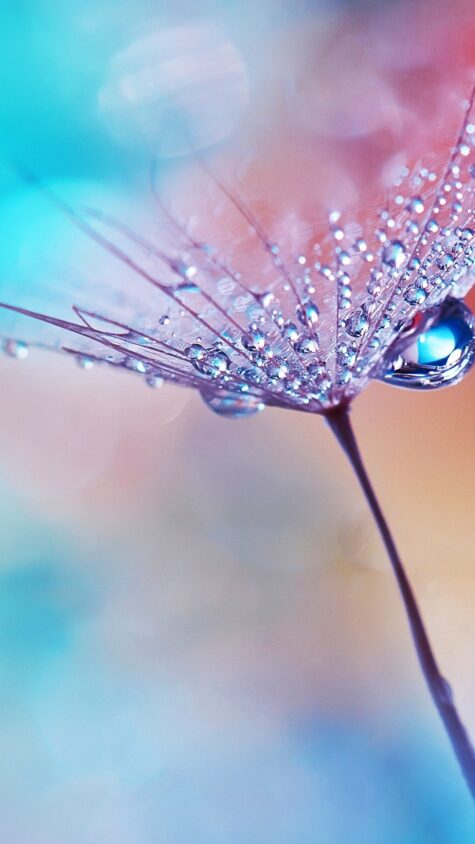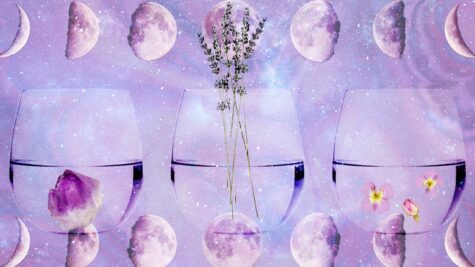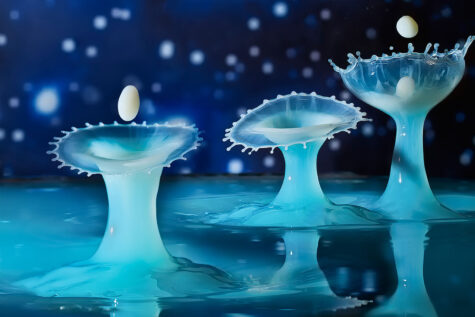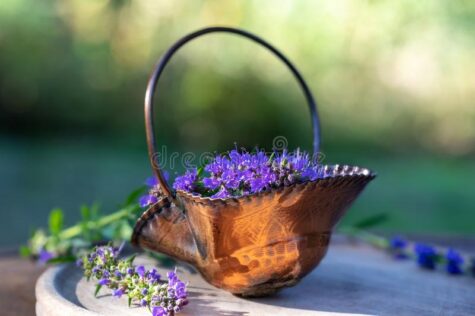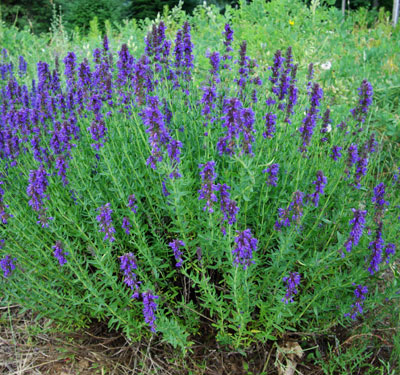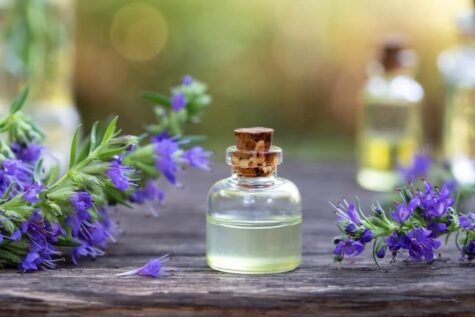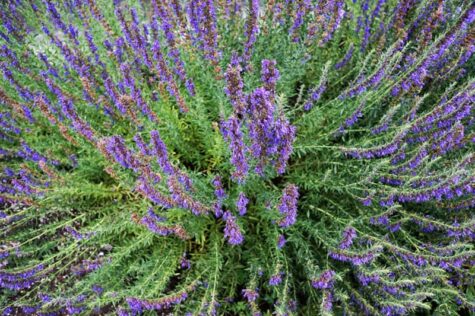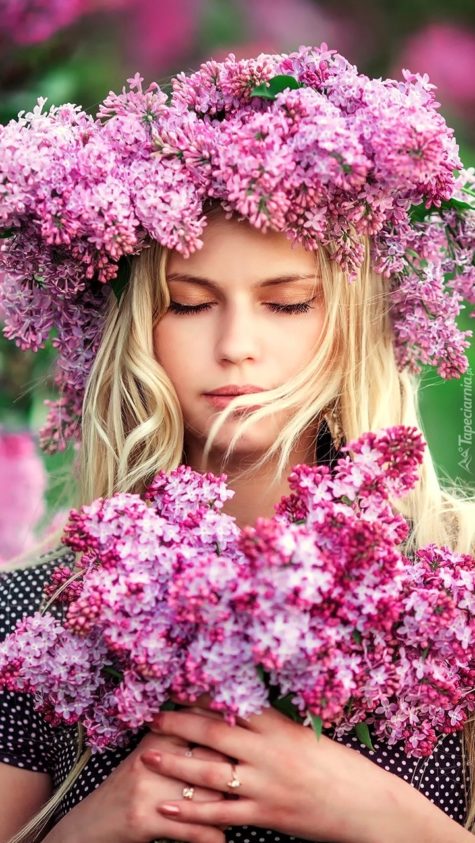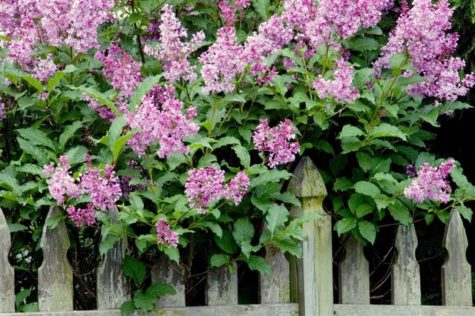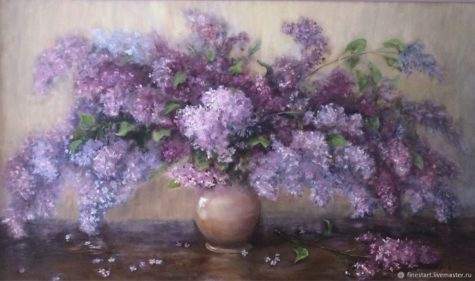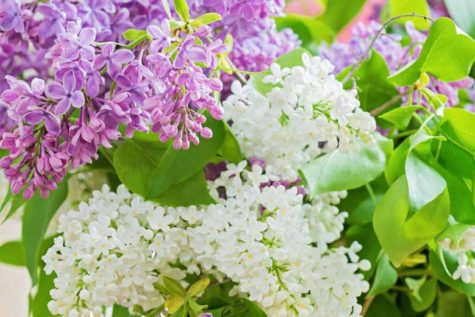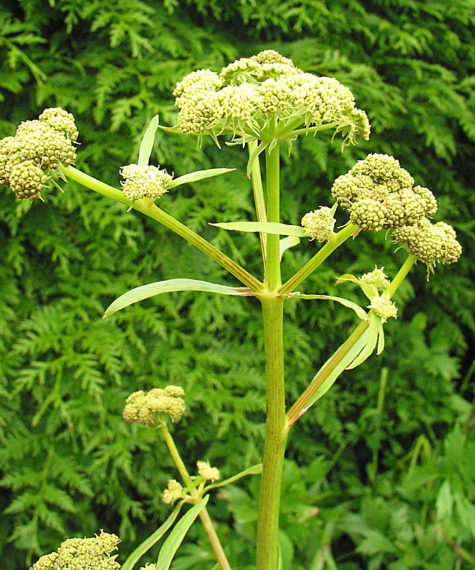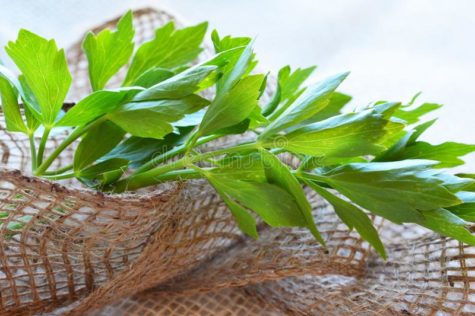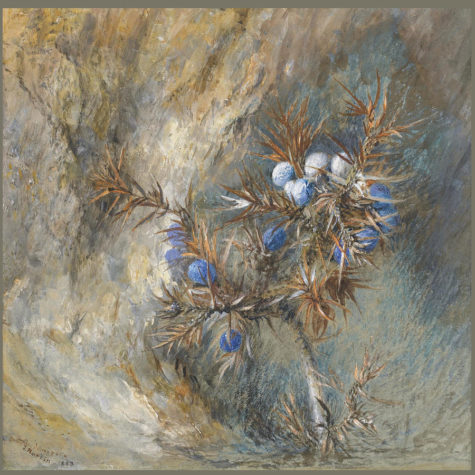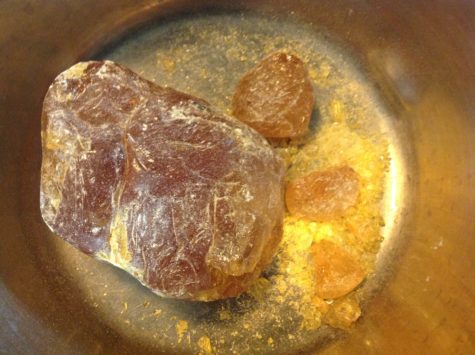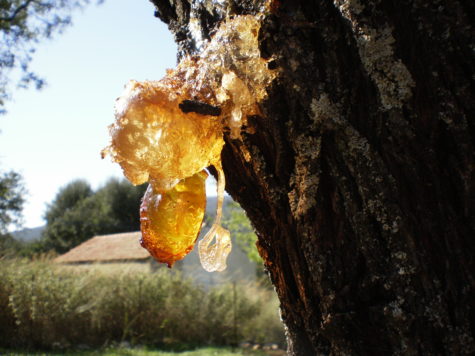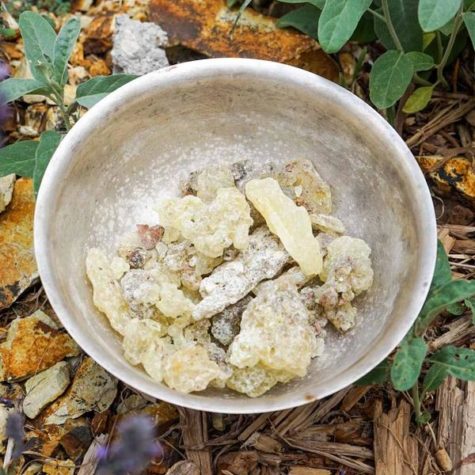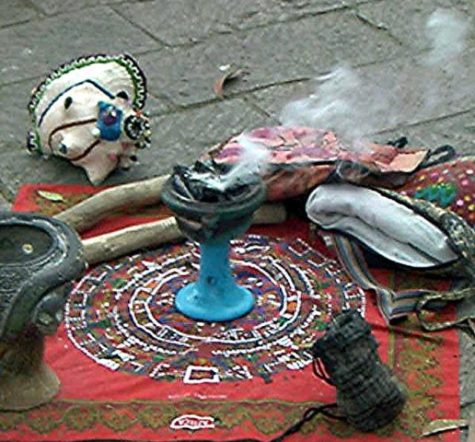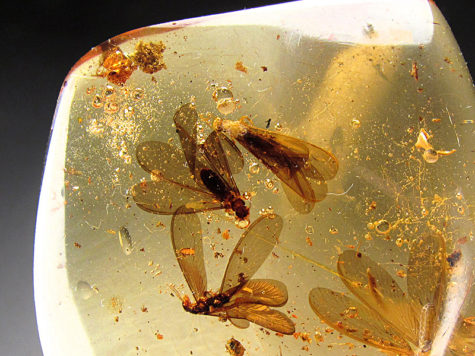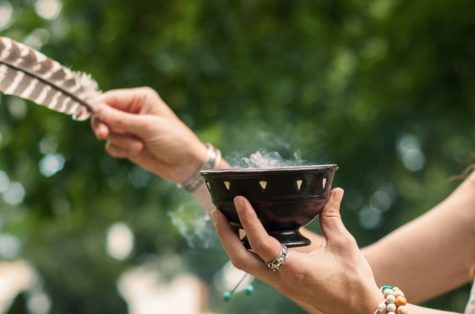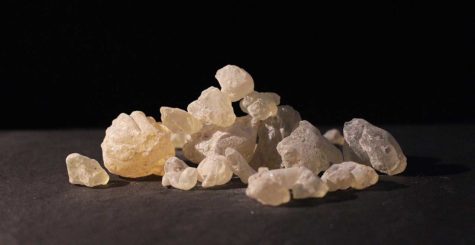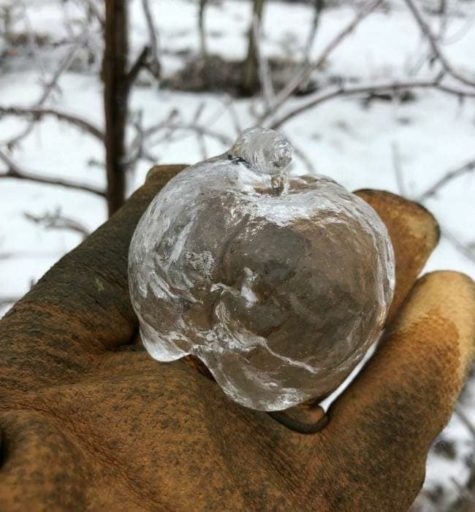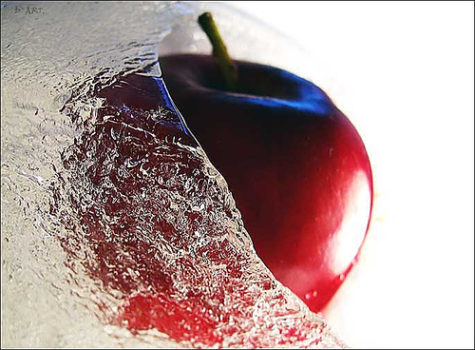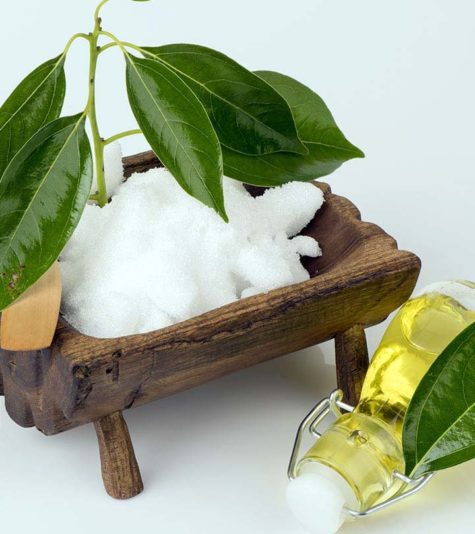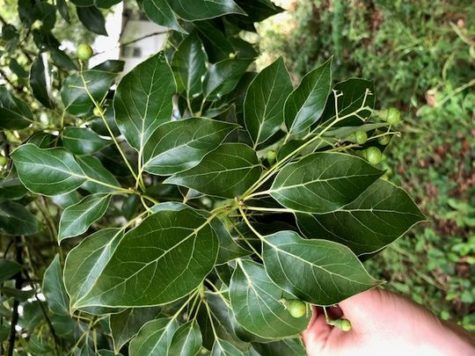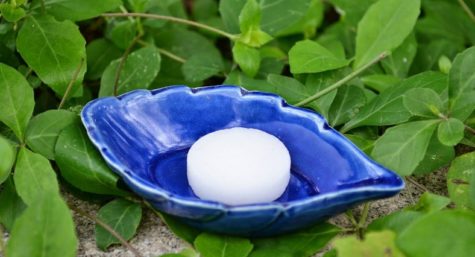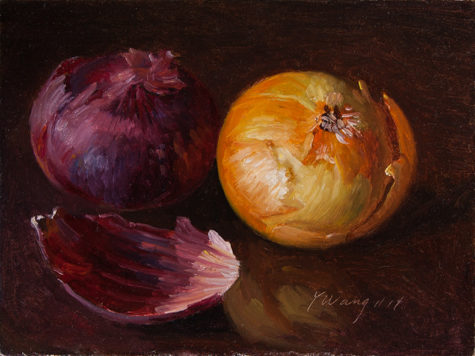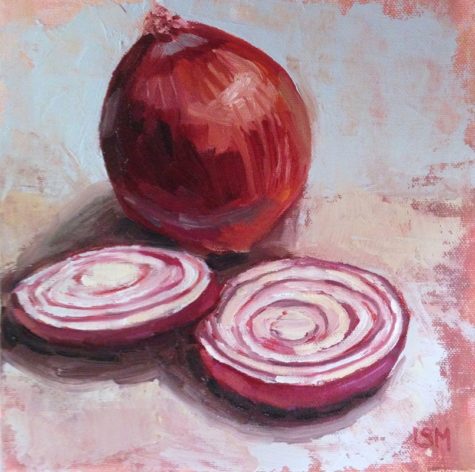Purification
“There is no life without water.”
~Albert Szent-Gyorgyi
Water magick is very versatile; it incorporates techniques that bring about changes both within and without. For water magick to occur within, one must consume the water or call upon that aspect of the self. For it to occur without, one must bathe in it, swim in it, cleanse with it, etc.
Water is a universal symbol of the unconscious mind and is linked to the moon, femininity, and irrationality. Oceans are equated with chaos as they are boundless and ungovernable. The conscious mind is more closely linked to the lake or pond. The ancient belief that the earth was created from primordial waters is a psychological metaphor for the birth of ideas in the unconscious mind.
Water is the primordial substance of Goddess Mother; one of the four elements; in Sanskrit “Va” is one of the primary mantras the brought the universe into being; the glyph for water is a circle with a horizontal line, like the sea horizon, called a diameter, which literally means “Goddess Mother”; the primordial Ocean of Blood, the Generative Womb of All, the Deep.
Water Associations and Symbols
Water is sometimes represented by undulating lines, or a triangle pointing down. Colors commonly associated with water are blue and green.
- Life
- Motion
- Renewal
- Blessing
- Intuition
- Reflection
- Subconscious
- Fertilization
- Purification
- Transformation
Differing Types of Water
The magickal properties of particular types of water can be used for the following purposes:
- Creeks and streams: Purification, harmony, cleansing
- Dew: General health, eyesight, beauty. Dew is said to be especially powerful if gathered at dawn on Beltane.
- Fog and mists: Creativity, balance, partnerships.
- Ice: Transformations, balance, creativity.
- Pond or lake water: Peace, contentment, relaxation, self-reflection.
- Rain water: Energy, protection, cleansing. The first rain that falls in the month of May is considered sacred.
- River water: Cleansing, moving forward, protection.
- Seawater: Health, magickal power, manifestation of goals. An old Welsh belief states that a spoonful of seawater a day will ensure a long and healthy life.
- Snow: Transformations, balance.
- Spring water: Growth, holy water, cleansing, protection, prosperity.
- Swamp and waste water: Banishing, binding.
- Waterfalls: Power, energy, success.
- Well water: Healing, wishes, intuition.
The Environment of Water
The areas surrounding the water can be used for the following magickal purposes:
- Beaches: Rituals, spells, fascinations, meditation.
- Harbors: To promote abundance and prosperity; to serve as an aid in banishing things.
- Riverbanks: To increase personal power.
One method of water magick is to draw symbols on a sandy beach and wait for the waves to erase them and bring your spell to completion. You can use magickal symbols or simple stick figures. You can also draw with soapstone or natural chalk and allow the rain to wash it away. Releasing things into a running stream is yet another method.
The element of water is associated with the western quadrant and represents dreams and feelings. More ways to work with this element are magickal baths for cleansing, love, healing, protection, and prosperity.
Water drowns and erodes, wearing away even the densest of stones given enough time. Water is also one of the four elements essential to life in traditional western philosophy. Its qualities are fluidity and cohesiveness. Flowing water usually represents change and the passage of time.
Water Correspondences
Cup: medieval universal symbol of water, the mother element; represents the water of the sea womb which gave birth to the earth and all that lived on it.
Fountain: the fons vitae, or fount of life, was the source of the life force, the primordial “nether upsurge” of blood/water from the womb of Mother Earth.
Lapis Lazuli: traditionally symbolized water as the primordial element of creation.
Lotus: Hindu womb of nature; symbol of the four elements, water being the surrounding support for the stalk of the lotus blossom.
Ocean: equated with the Tao as the primordial and the inexhaustible.
Pearl: created from the union of male (fire) and female (water); the merging of water and moonlight.
River: symbol of purification, death and rebirth; dwelling place of gods, goddesses, water-spirits, nymphs, and naiads (in Greek mythology a type of female spirit).
Sea: the eternal deep; Egyptian name for the sea is Temu; symbol of birth and rebirth; holy baptismal waters; in Scandinavia called “the Mother’s Womb”; associated with ancient goddesses the world over; global universality of the sea goddess.
Streams: sacred, life-giving water; curative; restorative.
Well: the feminine principle; womb of the Great Mother; sacred portal to the “other world.”
Crossing Water
If you are ever out walking or driving and feel danger or ‘evil’ nearby, try to cross over water. This can mean driving over a bridge or stepping over the water running down a gutter or stream. Evil and danger cannot cross over water, for it purifies and neutralizes it, thus rendering you safe.
This is an ancient custom, but can still be used today with good effect.
Water Symbolism
The symbolism of water has a universal undertone of purity and fertility. Symbolically, it is often viewed as the source of life itself as we see evidence in countless creation myths in which life emerges from primordial waters.
Interestingly, we are all made of water, and so we can liken many of these myths and allegories to our own existence (the macrocosm mirroring the microcosm and vice versa). Further, we can incorporate symbolism of circulation, life, cohesion and birth by associating the creative waters of the earth with the fluids found in our own body (i.e., blood).
In Taoist tradition, water is considered an aspect of wisdom. The concept here is that water takes on the form in which it is held and moves in the path of least resistance. Here the symbolic meaning of water speaks of a higher wisdom we may all aspire to mimic.
The ever-observant ancient Greeks understood the power of transition water holds. From liquid, to solid, to vapor – water is the epitome of metamorphosis and philosophical recycling.
Among the first peoples of North America, water was considered a valuable commodity (particularly in the more arid plains and western regions) and the Native Americans considered water to be a symbol of life (further solidifying the symbol affixed in many creation myths).
So it is also with the ancient Egyptians as we learn their beloved (and heavily relied upon) Nile river is akin to the birth canal of their existence.
- Unseen influences.
For many reasons, water meaning deals with intuition, psychic perception and dreams. What happens under the surface of water is a mystery to the unaided eye. It’s much the same with human emotions. Water reminds us to dive beneath the surface of our feelings and use intuition for better understanding.
- Healing effects.
For centuries, cultures around the world have viewed water as a sacred symbol of healing, cleansing and renewal. It’s a no-brainer, really. Water washes off the grime…not just mud, but also the crummy stuff that clutters in our hearts. Water can energetically cleanse us inside and out!
- Get flexible.
One of the most beautiful lessons water can teach us his how to be flexible and embrace change. Consider: Water always takes on the form in which it is held. It can also carve out mountains to make its way forward. Water reminds us to go with the flow no matter what the situation.
Water In Astrology
In western astrology, the following signs are Cancer, Scorpio, and Pisces are considered to be “water” signs.
- Cancer – The Crab
Cancer is a cardinal water sign and it represents clarity, purity, trust, refreshment, and regeneration. The crab’s shedding of its shell for a new one represents the rebirth or renewal aspect of water. Its contentment to flow with the natural cadence of water represents motion and trust.
- Scorpio – The Scorpion
Scorpio is a fixed water sign. Water deals with the subconscious and holds endless mysteries like the obscure world thriving inside vast murky oceans. The sign Scorpio associates with water to symbolize stillness, reflection, and mystery.
- Pisces – The Fish
Pisces is a mutable water sign and representative of life, motion, depth, and understanding. Water is believed to contain knowledge of the infinite unknown and is known to be the source of life. As a water symbol, the fish represents wisdom, creativity, and fertility.
Water In The Tarot
In the Tarot we find water is symbolized by the entire suit of cups. As water symbols, Tarot cups represent intuition, emotion and inter-connected energy flow between all living things. Just like water is formless and takes the form of the vessel it is put in, Tarot cups are elusive, seductive and difficult to interpret. Their meaning depends on the person viewing them. Tarot cups deals with complex issues related to the heart, psyche, and emotions that can be fluid as water.
Besides the suit of cups, water is also symbolized by some other Tarot cards, including the Moon, Star, and Temperance.
The Moon Tarot card represents the subconscious, emotion, reflection and clarity. The Star Tarot card symbolizes intuition, guidance, motion, fluidity, cleansing, and rejuvenation. Meanings of The Temperance Tarot card deal with maintaining fluidity, keeping in motion, going with the flow, creating harmony, and striking a healthy balance between the conscious and the subconscious.
Water In the Celtic Ogham
The Celtic Ogham denotes the system of wisdom followed by the ancient Celtic people. It consists of twenty sacred tree symbols that convey unique cosmic expressions and each tree symbolizes a specific attribute, essence of feeling. Trees of the Celtic Ogham that are associated with the element of water are:
- Willow
With its affinity to watery areas, the willow has been closely connected with the psychic realm and used in ritual and metaphysical practices. It symbolizes inspired imagination, clarity, growth, and adaptability.
- Reed
Growing in swampy areas, the reed was used by the Celts in many ways – making roofs, cleansing homes, making candles & flutes, etc. Reed’s water symbolism includes purification, protection, and clarification.
- Alder
The Alder is primarily a swamp or wetlands tree. Often, its roots are submerged in a watery area and provide shelter to fish. Its leaves decompose in water and provide nutrients for water creatures. Alder associates with water by symbolizing life, nurturing and revitalization.
The Christian Context
In a Christian context, water has many correlations. Christ walked on water, and transmuted it into wine, thus these acts can be seen as a transcendence of the earthly condition. Christians are baptized with or in water, symbolizing a purification of the soul, and an admission into the faith. Biblical associations with water can also be destructive as in the great flood which only Noah and his family escaped.
Water Superstitions and Lore
According to folk belief, spilling water behind the person who goes on a journey, or to do a job, will bring good luck, and is done so that the travel or the job will end happily. It is also practiced when going to school, on an exam, for a job interview, going into the army and the like.
Many years ago in Wales, it was believed that splashing water around when washing clothes would cause a wife to be cursed with a drunken husband.
It is bad luck to boil water without purpose. If you let the kettle boil over or fill the teapot too much, a thunderstorm will surely follow.
Leaving water on a table top will dispel bad spirits and attract ants. However, you can leave a full glass of water out on a counter top or on top of the refrigerator to ward off negative energy or bad spirits at night.
If someone sneezes once (more than once is okay) as you are leaving the house, it’s bad luck, so you have to go back in, sit down for a while, drink some water and then attempt to leave again.
An English superstition hinged on the belief that water would protect your house from night-time nasties like ghouls and demons. If you threw water out of your home during the night, so said the old wives’ tale, you weakened this protective force and left yourself open to a run of bad luck.
You’d also be in for some less-than-good luck, if you spilt water when you were carrying it back home from the brook or spring – though it’s unclear if this was founded on the same belief in malevolent spirits.
Bulgarians have superstitions around water and travel. When someone leaves the house for travel, or for important days, such as weddings, the first day of a new job or the last day at school, people throw some water, for instance a cup of water, and say, “everything goes like on water”. This means good luck, or in the case of a travel that all the things in the person’s absence will run smoothly like water flows.
A Yorkshire tradition involved pouring hot water on the doorstep of a church after a newlywed bride and groom left. This would ‘keep the threshold warm’ for another wedding – the idea being that before the water evaporated, the seeds would be planted for the next village wedding.
It was believed that those who suffered from sore hands in winter could solve the problem by going out and grabbing a bowl of the first snow to fall. Letting this melt and then bathing your hands in it would stop the soreness for the entirety of the colder months, or so the suspicion said.
Similarly, water collected from the first rainfall in June was said to cure skin complaints and to get rid of freckles.
In Germany, it is strongly forbidden to say ‘cheers’, or ‘Prost’ with water. Even for a joke. Because it is said you are literally wishing death to all your drinking buddies.
Dreaming About Water
Water dreams are common, and they carry deep, primal significance. Of all the dream symbols, water seems to be the universal sign of subconscious thoughts and emotions. Jonah was swallowed by a fish in the water. Noah built an ark to survive the flood of the earth.
Water plays an integral role in numerous pieces of literature, art and mythology. Drowning in the water is one of the most common ways people fear dying, but consuming water is also necessary for life and health. Is there any wonder we have nightmares and dreams about water?
Whether the dreamer is in the water, near the water or far from the water, the key is to uncover what a dream about water reveals during waking hours.
In the language of dreams, water often represents our emotional life, the feelings we have under the surface, while the solid ground represents what we knowingly communicate to others.
Depending on the amount of water, the behavior of the water and the dreamer’s distance from the water, it is possible for the dreamer to piece together the meaning and learn what his dream is telling him.
A large body of water could symbolize deep emotions, while walking in the rain could suggest cleansing. Turbulent water can suggest turbulent emotions. Water that is muddy or murky could symbolize confused or unclear feelings. If you were lost or drowning in an ocean, you could feel overwhelmed by your emotions. Keeping a safe distance from choppy waves could symbolize emotions that are not being dealt with.
When you have a dream about water, try to recall answers to the following questions. They may help you discover the lesson your psyche is emphasizing.
- What type of water did you dream about?
- What was the behavior of the water in your dream?
- What was your distance or reaction to the water?
- What is your present emotional state?
- What new thoughts have been on your mind?
- What does a dream about water symbolize to you?
There are many ways to dream about water. Sometimes dreamers are fearful of it, resulting in nightmares, but other times it is a pleasurable experience, resulting in dreams of freedom and exploration.
The following two dream examples may provide help for your own interpretations.
- Swallowed by the Sea
You are out at sea, floating on a small wooden raft alone. The waves have been rougher than usual, and you fear the raft will tip. Suddenly, a tremendous tidal wave forms and threatens to overwhelm you. Terrified of being swallowed by the sea, you wake with a start.
The vast ocean – with its deep waters, rising and falling tides, and mysterious sea creatures – can be a foreboding place to hang out alone. Floating on the surface of all this, on a flimsy raft, it is no wonder the dreamer fears she could “tip” at any moment. Matters take a turn for the worse when a tremendous tidal wave forms and draws near, threatening her life.
The phrase “swallowed by the sea” conjures an image of being consumed or overwhelmed by a large body of water. When people find themselves in a “sea of trouble,” they usually feel helpless to the situation that threatens to drown them.
In its simplest form, this dream could be a metaphor for emotions that threaten to overwhelm the dreamer in her waking state – especially since she only has a small raft to carry her. Since a tidal wave would likely symbolize an emotional upheaval, the dreamer is probably experiencing some big emotions.
If the dreamer swam through the wave, or saw herself in a sturdy boat, this may provide a clue as to how she is dealing with her emotions. In this case, however, the waves are “rougher than usual” and she is scared of the tidal wave drawing near. Sometimes, our fears feel larger than reality; the dreamer may do well to avoid letting a present situation of concern consume her thoughts and feelings.
- Underwater and Breathing
You are in the middle of swimming through an underwater tunnel and holding your breath is becoming more difficult. Just when you think you can’t last another second longer, you take a deep breath. You can breathe under water! When you emerge from the tunnel, you decide to swim free in the ocean and explore it for fun.
This is a delightful dream, and it carries rich symbolism. The dreamer starts out holding his breath because he doesn’t think he can breathe in the water. This may be the same way many people feel when they are about to approach a confrontation, unexpected meeting or difficult situation. Not knowing what will happen, emotions tense, they move forward, “holding their breath.”
The dreamer decides to go for it – he takes a breath because there is no other choice. To his surprise, he can breathe. And the feeling of freedom this provides sends him off on an underwater adventure, free to swim, play and explore.
“These underwater dreams suggest that the dreamer is immersed in emotion,” writes Richmond. “Since he can breathe under water, he is comfortable with his emotional life and feelings.”
- Growth Opportunities
Whether it’s a dream or nightmare, the presence of water in any form can indicate how we are handling our unconscious (or conscious) feelings. By tuning into our deepest reservoirs of emotion, we can learn new ways of dealing, which can lead to growth and freedom.
A dreamer who avoids going near the water may feel intimidated by deep emotions and avoid close relationships in her waking hours. The key here is to go near the water – if not directly in it. Whether awake or asleep, allowing uncomfortable emotions to exist while wading into a situation “a little deeper” will yield a new experience. There is the chance of being hurt, but there is also the possible reward that comes with authentic closeness.
Dreams of water that cleanses, quenches or provides adventure can feel liberating. Most of the human body is made of water and, without it, humans couldn’t survive. When dreamers experience fun in the water, they are likely connecting in a healthy way with their spirit and psyche.
Dreams about water remind us that our emotions are a force to be reckoned with. They can open our lives to a deeper, more natural experience, or they can threaten to overwhelm us if left unattended. The good news is, as alarming as water dreams can be, they alert us to parts of ourselves that are open to exploration and growth.
The next time you have a dream about water, jump in! When you wake, analyze the language of your dreams and discover what new challenges await you.
Going With The Flow
“Water does not resist.
Water flows.
When you plunge your hand into it, all you feel is a caress.
Water is not a solid wall, it will not stop you.
But water always goes where it wants to go,
and nothing, in the end, can stand against it.
Water is patient.
Dripping water wears away a stone.
Remember that, my child.
Remember you are half water.
If you can’t go through an obstacle, go around it.
Water does.”
~ Margaret Atwood
Deep Thoughts About Water
The nature of water is that it is defined by the shapes of the of the solid objects that surround it, but that it has no shape of its own. Even when frozen into ice, this “solid” water depends on its environment for the form it takes, even down to the gravity that dictates the shape of icicles.
In The Sacred and the Profane, Mircea Eliade observes that form “manifests itself above the waters, by detaching itself from the waters.”
Water symbolizes a mass of possibilities, and it’s not surprising that most creation stories share a common theme of the earth arising from a primordial, whirling, watery ocean from which all other life was created. Part of the story of our own evolution was when amphibious creatures came out of this water and spent their whole lives on dry land.
Similarly, the story of a great deluge is universal, whether as an accident of nature or as an act of God. For many religions, this flood constituted a symbolic “washing away of sins” on a grand scale.
Recent images from flooded cities, such as New Orleans, are a sober reminder of the devastation that can be wreaked by water’s huge, formless mass.
The movements of the Moon and the planets dictate the rising and falling of our earthly tides, further underpinning the connection between all the elements.
Individual life gestates in the watery environment of the womb. Here we start to make the connection between water and the feminine element, as the continually changing form of the Moon whose visible shape, like water, is also defined by something else; the light of the constant Sun.
Baptism, a religious ceremony sometimes involving a complete immersion in water, symbolizes a rebirth and regeneration, underlining the idea that water gave birth to all life.
Another vital aspect of water is its ability to reflect; Native American people call a still pool of water, aptly and lyrically, a “sky mirror.” Water therefore gave man the first means of seeing himself as others saw him, and reinforced the reflective links to the Moon.
Like everything else in the world, water is affected by gravity. Water flows downwards, from the highest place until it meets the sea, and the river itself is a symbol of the linear aspect of time. This flowing water carries with it the spirit of the mountains from which it springs, providing an essential resource.
Most of the world’s major cities have developed along courses of rivers, and we find time and time again that both the rivers and the cities are held to be sacred in some way.
The oceans are so deep that, despite all of our exploration, there are still life forms that remain undetected. The oceans also contain surprising aspects, like the deep hot water vents whose apparently poisonous environment can support all sorts of creatures, be they animal or vegetable.
Because the deep waters of the sea and lakes symbolize unknown realms, we often find that fairy tales and myths use these watery depths as places where otherworldly spirits dwell.
Sources:
- Elemental Witch
- What’s Your Sign
- Encyclopedia of Magickal Ingredients
- Water Logic
- The Symbolism Project
- Encyclopedia of Secret Signs and Symbols
- Ancient Symbols
- Everyday Health
- Water Online
- Ruler: Jupiter
- Element: Fire
- Type: Plant
- Magickal Form: Dried leaves, Essential oil
- Magickal Influences: Purification, Conscious mind
Hyssop, (Hyssopus officinalis) is the herb that purifies your life. This magickal herb will protect you and your home, purify your altar or sacred space, and dispel depression. In the language of flowers, hyssop flower meaning is traditionally symbolic of humility, repentance, health, and sacrifice.
Hyssop has long been used in ritual. Temples in ancient Greece were swept with bunches of this herb. Hyssop was deemed to be sacred to the Goddesses and the Gods.
The Bible calls Hyssop the herb of forgiveness. It is mentioned in Psalm 51, “Purge me with Hyssop; wash me and I shall be whiter than snow.” It was used over six thousand years ago in guilt offerings.
Add a pinch of dried Hyssop to your bathwater as part of a ritual of healing and purification, especially if you have been feeling depressed. This will also help to alleviate feelings of guilt.
Hyssop is a serious karmic herb and can be used to heal the world of negativity. Sprinkle upon the earth for world peace. To remove negativity in your home, tie a bunch of hyssop branches together to create a symbolic broom. Then use it to sweep your home, removing any negative energy or spirits.
You can also use a small bunch of Hyssop leaves to sprinkle water over objects or around rooms to bless them. Hyssop grown around the home is said to repel thieves.
Hyssop is said to have gone into the making of Solomon’s Sprinkler, and is the best choice of herbs to day to make a sprinkler for holy water. Here’s how to make one:
Gather Hyssop beneath the New Moon in Cancer, and dry it through the Full Moon (although it may take longer than this to be completely dry). The handle may be fashioned of wood, or a binding of leather wrapped around it. As such, it will cleanse your magickal space and make it sacred for ritual.
When the plagues visited Egypt, the Hebrew people made brushes of dried bunches of Hyssop. These were used to paint the portals with blood, which protected their children until the priest Moses would lead them away.
Place bunches of hyssop over doors, windows, and room thresholds to prevent entry of infectious disease. Carry small hyssop bouquets when venturing out during flu season (or a pandemic).
Inhale the sharp, greenly-scented essential oils for purification. Or, sniff sprigs of the fresh herb. Place hyssop in a vase of water and leave in the home to purify it as well. The scent of fresh hyssop will clear your head and strengthen your mental processes.
You can also add about a half a cup of Hyssop tea to your mop water to cleanse your house To make the tea, add two tablespoons of dried Hyssop to two cups of boiling water and allow the mixture to steep for about ten minutes before straining it. You can empower this cleansing by reciting Psalm 51 as you mop. Dispose of the used wash water at a crossroads.
Hyssop in olive oil can be added to the bath to kill jinxes and for relief from sin. To kill a jinx, rub the oil mixture downward while standing between two white candles in the bath, as you cleanse yourself recite the 21st Psalm. Carry the used bath water to a crossroads and throw it toward sunrise, saying: “In the name of the Father, Son, and Holy Ghost.” This can also be used to cleanse yourself after practicing dark magick.
Because of its associations with religion, the scent of fresh hyssop can be sniffed to heighten spirituality prior to religious rituals of all kinds. Since it is also a holy herb, you may drink Hyssop as a tea to deepen your connection to the divine.
When burned as incense, dried Hyssop will raise the spiritual vibrations of your home and release the energy of protection.
Hyssop is associated with dragons and it is said that burning it will assist your interactions with them.
Hyssop does have some affinity with the winter solstice and as such can be used in combination with holly. Small bunches of hyssop and holly can be gathered in the summer, bound up with a suitable colored cord, and hung around the home to guard and protect the abode and all who dwell within it.
Hyssop essential oil is excellent for cleansing auras and for healing by the laying on of hands. It is also good for consecrating magickal tools which are of tin, and is the herb for cleansing amethyst and lapis lazuli.
Warnings:
Hyssop essential oil is a highly potent form of this herb. It is toxic in large doses. In children, very low doses can cause convulsions. It’s possible that this may be the only essential oil capable of producing true epileptic seizures. For safety, substitute the fresh herb.
Hyssop should not be taken by people with epilepsy or any history of seizures. Hyssop should not be used while pregnant (may cause miscarriage) or breastfeeding (just to be safe). Small amounts of hyssop used in seasoning foods are considered safe.
Sources:
- Complete Illustrated Encyclopedia of Magical Plants
- Encyclopedia of Magickal Ingredients
- Hoodoo Herb and Root Magic
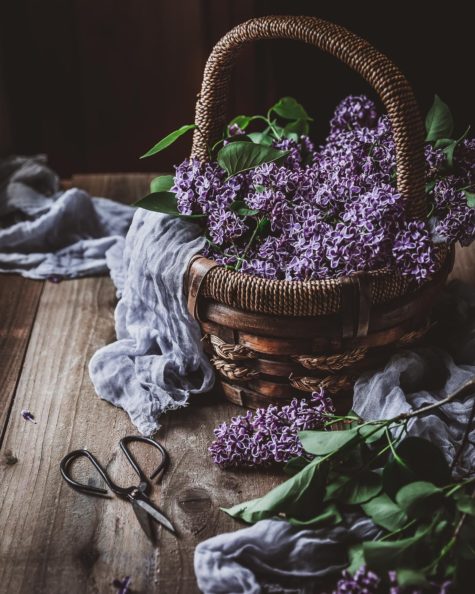
Magickal Uses
- Part used: Fresh flowers
- Planet: Venus
- Element: Earth
- Magickal Influences: Love and Purification
This is the flirt flower. It attracts love quickly although the love it brings often doesn’t last for long. Wear the fragrance or bathe in fresh lilacs when you want a fling. This flower is for fun. It is a great scent to spray in a room before parties or before meeting a date who is taking the relationship too seriously. Lilac keeps things light.
Inhale the aroma rising from the light purple flowers for internal purification. To cleanse a home, place jars of the fresh flowers in several rooms. Bathe in Lilac dew on May Day for a year of beauty.
The scent of fresh lilac flowers was once thought to drive away ghosts.
The scent of lilacs enhances a child’s educational aptitude. Here are a number of ways to use it:
- Place a drop of lilac fragrance oil on a light bulb near where a child studies.
- Place a vase of fresh lilac blossoms on the child’s desk so that the fragrance wafts over the child while studying.
- Place a table and chair outside next to a lilac bush in bloom and send the child outside to study.
Like many flowers, lilacs can be utilized in love expansion rituals. The sweet fragrance of these seasonal blooms brims with loving energies.
In aromatherapy the fragrance of Lilacs is recommended to patients who suffer from chronic depression and anxiety. Lilac blossoms can be added to your bath for a soothing aromatherapy remedy for stress and anxiety.
No true lilac essential oil is currently available, however lilac scents are available. They are said to bring peace and harmony. Also believed to induce “Far Memory” or the ability to remember past lives. It is also useful for inducing clairvoyant powers in general.
Lilac oil reputedly repels vampires and is certainly more fragrant than garlic. Most of the Lilac oil that is commercially available is synthetic; presumably vampires can tell the difference. If you make your own, the lingering aroma should keep the vampire out of the house as well.
A recipe for how to make your own lilac oil can be found here: Oil of Lilac
Jennifer Shepherd at the Lipstick Mystic recommends using the seasonal qualities of lilacs as a way of jump-starting your life. She says,
“Since lilac tends to be one of the earlier flowering plants each spring-time, it carries with it some of the same spiritual energies of other “early bloomers” like daffodils and forsythia. Lilac has the same quality of being able to push or penetrate through harsh, heavy “winter” energies.
So if you’re seeking some kind of significant breakthrough in your life, and you want a little extra kick or punch to help get you through, connecting with the energies of lilac can be very helpful. Smelling the fresh flowers on the bush or bringing a few blooms inside to enjoy is the best way to connect with this special plant.”
Lilac blossoms are natural astringents–they dry things out. Place a cup or two of slightly wilted flowers in a jar, and fill with witch hazel. Allow it to steep for a few days, and then strain out the flowers. Use the lilac and witch hazel blend as a facial toner, to keep your skin looking healthy and fresh all summer. Dab a bit on your wrists when you’re getting ready to go out, to attract new love your way.

The Lore of Lilacs
The trees were respected by Orthodox Christians and the plant’s Greek name “pashalia” is derived from “pasha” which in Jewish means “passage” as they were considered to drive ghosts away instantly. The lilac tree is also linked with reincarnation.
One of the plant’s secrets is that the flowers do not fade under hot water. Lilacs are said to remove ghosts, aid the exploration of past lives, and bless the passages of life, both birth and death. Purple lilacs are the symbol for the first emotions of love. If the blossoms are strewn about it is said they can ward off evil.
Lilacs have a history of promoting clairvoyance, divination, peace, harmony and creativity. Lilac tonics were probably first introduced in Henry 8th time. They are called a harbinger of spring. White lilacs are a symbol of innocence.
In some parts of England, it is considered unlucky to bring Lilac, especially white Lilac, into the house. The purple and red varieties are usually less feared, but even they are sometimes excluded from house decorations as bringers of misfortune.
In the 1960’s, a florist in Oxford England strongly advised a customer not to buy white Lilac for a friend in the hospital on the grounds that many people thought it foretold death if brought indoors. He did not know why this should be so, only that it was quite commonly believed. In fact it is almost certainly due to the widespread association of death and misfortune with “drowsy-scented” flowers, and also with those which are white.
An interesting detail about the Lilac tradition is that it is found only in some English districts, especially in the midland counties, and quite unknown elsewhere.
It is lucky to find a five-petaled lilac blossom of any color. Along the Welsh border, Lilac trees are said to mourn if any of their kind are cut down, and to be flowerless in the following year.
From the Cincinnati Enquirer 1 August 1900, we have this fun little tidbit:
“She who wears the lilac will never wear the wedding ring,” runs the old proverb, and although the scent of the flower is sweet and its tints are fresh and universally becoming it is contraband among the village maidens in England.
A single boutonniere of lilac has been held responsible for solitary spinsterhood. For the same reason mothers with marriageable daughters never allow a jug of the sweet smelling blossoms inside the house. It may stand on the outside window sill, but “there’s no love luck about the house” when there are lilacs in it.
To give one’s sweetheart a spring of the flower is the death blow to the most secure of engagements. White lilacs are even more fatal to love affairs than the colored ones; they are, in fact, as ominous as an opal ring. Love, however, laughs at artificial flowers, and only the real tree grown one can come between the lover and his lass.
Stony-hearted bachelors sometimes sport a lilac boutonniere as a charm against feminine blandishments. Londoners do not share the superstition, and use the flower freely for decoration, regardless of the unlucky attributes.
Queen Adelaide, consort of King William IV, was apparently unafraid of lilacs, although, to be fair, she was already married when she commissioned her famous Honiton lace dress whose flower patterns, included lilacs, spelled out her name.
The meaning of the lilac flower has diversified throughout the ages. Lilacs originated in Southeastern Europe and are a popular part of the Mediterranean culture. They are frequently associated with the Easter holiday, which occurs during the peak of its bloom time.
Lilac meanings vary throughout different cultures and time periods.
- The Celtics regarded the lilac as “magical” due to their incredibly intoxicating fragrance.
- During the Victorian Age, the giving of a lilac was meant to be a reminder of an old love. In fact, widows were often seen wearing lilacs during this period.
- In Russia, holding a sprig of lilac over the newborn would bring wisdom.
- In the United States, the lilac is the official state flower of New Hampshire and represents the ‘hardy’ nature of its people.
Because lilacs have one of the earliest bloom times, they symbolize spring and renewal. Lilacs also symbolize confidence, which makes them a traditionally popular gift for graduates. There are many meanings that lilacs have that can best be classified by color.
- White lilacs symbolize purity and innocence.
- Violet lilacs symbolize spirituality.
- Blue lilacs symbolize happiness and tranquility.
- Magenta lilacs symbolize love and passion.
Lilac, the color for which this flower is named, is a light purple that symbolizes a first love.
Although various colors of lilacs have different meanings, the lilac has always had a strong association with love and romance throughout history.
Dreaming About Lilacs
Lilac in a dream is a sign of future changes in personal life, the anticipation of big feelings and an exciting love affair.
- White lilac personifies purity, sincerity, sensuality, the birth of affection.
- Violet lilac is a longing for love experiences, yearning of the heart; awakening of romance.
To dream of a blooming lilac is a sign of positive emotions, receiving pleasant news or surprise.
Standing under lilac bush in a dream promises a person a frivolous sexual adventure, which will very quickly exhaust itself, and feelings will evaporate before they turn into something serious.
Miller’s dreambook positioned dreams about lilac mainly as a good sign, foreshadowing love experiences, romance, a surge of sensuality. Flowering lilac shrub reflects the kind and open attitude of people around them to the dreamer, trust and sympathy. Tearing lilac shows a greater likelihood to achieve the desired.
A bouquet of lilac is a sign showing opportunity to find something new about your beloved person, to have sincere conversation. The image promises a romantic acquaintance for single people, but this union will not be long-lasting.
For people who have been married for a long time, a bunch of lilac flowers speaks about the revival of long-forgotten romantic feelings between spouses – sexual desire will be restored and a seemingly past, withering passion will appear.
Some dreambooks interpret ambiguously dreams of a lilac branch. To see a torn off branch in a dream is a symbol of illusion, deceptive hopes that will never be realized. One should beware of strangers who sincerely offer friendship at first glance. To see the blossoming branch of a lilac bush from a window in a dream promises pleasant pastime and an unexpected gift.
To see lilac in a dream and feel its scent means an extraordinary, almost mystical attraction to a person of the opposite sex. Dream interpretation advises not to succumb to this feeling (which will be very difficult to do), because the fruits of such intrigues will remind of themselves more than once, and can easily ruin the life of even the most self-confident person.
If the dreamer happened to pick the fragrant lilac in a dream, it means he will attract close attention of a person whom he likes for a long time.
To dream of a lilac flowers represents feelings about how beautiful it is to notice never fearing a sense of accomplishment in something that isn’t dependent on anything else. A sense of accomplishment in something that nobody else wants to do that always cares about your feelings. Feeling good noticing yourself successful from being self taught. Feeling good about your children having grown up to be independent never needing you for anything.
Sources:
- Encyclopedia of Herbology
- Mrs Daffodil Digresses
- Magical Aromatherapy
- The Encyclopedia of Superstitions
- Encyclopedia of Magickal Ingredients
- Magical Herbalism
- Element Encyclopedia of 5000 Spells
- FTD by Design
- Check My Dream
Magickal Uses
- Planet: Sun, Venus
- Ruler: Pan, Astarte
- Element: Water, Fire
- Astrological Sign: Taurus
- Parts Used: Dried Root
- Basic Powers: Love, Purification
Lovage is one of the most dependable herbs for drawing romance into one’s life. Not only will it bring you love, but regular bathing with this herb will enhance your beauty, physically, and will also allow the inner radiance to shine forth more brightly.
For this reason, Lovage is often used as a bathing herb, cast into the bath, the pleasant scent filling the room and delicately scenting the bather. In this manner, particularly when combined with a candle and poems of a romantic nature, is one able to attract romance.
Add seven rose buds to a Lovage bath, and you will become more attractive to the opposite sex.
With a subtle floral scent, the root is an effective addition to Herbal Amulets to attract love, and it can be steeped in wine to be served to a prospective lover.
You can also add the root, or a strong tea made by boiling the root, to a bath to become psychically cleansed.
In Central Europe, women wore Lovage around their necks when meeting lovers, and the herb was often put in love potions as a guarantee of everlasting devotion.
To encourage someone to love you more, the following can be done:
For nine successive days, rise early, boil Lovage root in water to make a tea, hand-bathe your genitals and face in this before dawn, carry the wash basin to a crossroads, call the name of the one you love, and throw your used bath water toward the sunrise.
One of the most nonjudgmental of herbs, Lovage draws the person most suited to your soul. A great root for bisexuals or anyone confused about which gender he or she is (or should be) attracted to. It is best used when invoking a new relationship and promises to quickly attract your heart’s desire.
Plant Lovage in front of and around your home to help ward off all sorts of unwanted intruders, ranging from door-to-door salespeople, to evil spirits, to epidemics, to vermin.
The leaves can be placed in the shoes to relieve weary feet.
Lovage dug up at night on Good Friday reputedly helps ward off either witches or the influence of the Devil.
Folk Names
- Bo’ Hog Root
- Gout Weed
- Italian Parsley
- Lavose
- Love Root
- Lubestico
- Sea Parsley
- Smellage
History and Folklore
The history of Lovage goes back to the ancient Greeks who chewed the leaves for digestion and gas. Both the Greeks and the Romans used the herb as a medicine, and in the Middle Ages it was used as a cure-all for most illnesses.
- The seeds were nearly as expensive as black pepper at one time.
- Hildegard of Bingen used Lovage in her cooking.
- John Gerard believed Lovage was one of the best remedies of his time (mid 1500s).
Lovage has an ancient history. It was introduced into Britain by the Romans and brought here by early English colonists and was often found in their gardens. Lovage was one of the seeds found in the early American Shakers’ seed sales.
As both a medicinal and culinary herb, Lovage now grows in the authentic garden at Plimoth Plantation, the re‐creation of a Pilgrim village in Plymouth, Mass.
New Englanders would candy the root and chew on the seed during long church services to keep them alert.
Colonial women “cured” many ailments with Lovage: sore eyes, upset stomach. They used fresh leaves for summer “sallets” and flavored winter soups, with the dried root. The dried leaves seasoned the stuffing for roast goose or turkey.
Sources:
- Encyclopedia of Herbology
- The Master Book of Herbalism
- The Herb Book by John Lust
- The Complete Book of Herbs and Spices
- Hoodoo Herb and Root Magic
- Magical Herbalism
- The Herbal Academy
- The Herbal Alchemists Handbook
- Element Encyclopedia of 5000 Spells
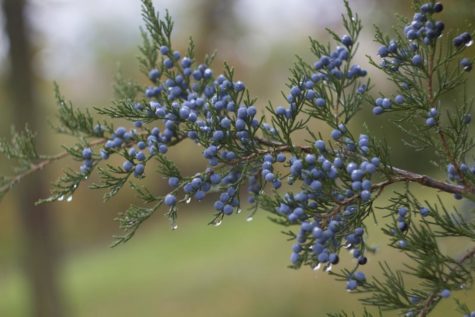
- Ruler: Sun
- Magickal form: Incense, fresh sprigs, berries, essential oil
- Basic Powers: Protection, Love, Healing, Cleansing
- Cautions: Do not drink the tea if you are pregnant, wish to become pregnant, or if you have kidney disease.
In the past, Juniper was regarded as a magick shrub to use against devils, evil spirits, and wild animals. It is mentioned in the Bible as a symbol of protection. Its aromatic scent made it a popular strewing herb, and shoots were burned to disinfect the air in a room.
Brew the berries into a tea and drink it to increase sexual stamina. Crush dried berries to release their scent and add to love potions to attract a man. String the matured berries for an attractive charm designed to attract lovers.
Juniper berries can be used in love spells, particularly to enhance male interest and potency. Steep in wine and drink a few sips daily to increase male virility. Steep in vinegar and add it to your bath to make yourself more attractive to men or apply it directly to the genitals (diluted with water) to increase male interest in them. Or add it to a bath you’re sharing. Juniper berries and their essential oils make for a nice “masculine” scent for men’s cosmetics (aftershave, beard oil, etc.). Use with due caution.
Hang a sprig of fresh Juniper in the home to drive away evil. A sprig of Juniper will protect the wearer from accidents. Sometimes used in anti-theft sachets, as it guards against thieves. Grow Juniper at your doorstep for protection. Gin (which is made from Juniper) can be sprinkled across a threshold to guard against theft.
Juniper is a thief catcher. If you bend a young Juniper branch down to the ground and hold it where you place it with two weights, one a big stone, the other the skull of a murderer, and say, “Juniper, I bend and squeeze you till the thief (name him) returns what he has taken to its place,” the culprit will feel an unaccountable impulse to return the property.’
Brush down the body with a bundle of sprigs to remove illness and place drops of oil in a bowl of water to promote healing in a sick room. Burn Juniper for purification and good health. One of the earliest incenses used by Witches was made from a combination of the leaves and the dried crushed berries.
Though burning Juniper wood gives off only minimal visible smoke, this smoke is highly aromatic, and in ancient times it was used for the ritual purification of temples. The smoke was said to aid clairvoyance, and continued to be burned for purification and to stimulate contact with the Otherworld at the autumn Samhain fire festival at the beginning of the Celtic year.
In central Europe Juniper smoke played a part in the spring-time cleansing and casting out of witchcraft. Juniper was also burned during outbreaks of the Plague, and in Scotland the disease could be dispelled by fumigating the house with Juniper smoke while its occupants were inside, after which the house was aired and the occupants revived with whisky!
Juniper was burned to goddesses and gods in ancient Sumer and Babylon, and was widely used in Egyptian incense formulas. It was sacred to Inanna and her later counterpart Ishtar. Many centuries later in Europe, branches of Juniper were smoldered and carried around fields and farms to release protective energies and guard livestock and crops.
It is a common ritual incense ingredient in Tibet and was much used by various Native American groups.
It is said that a Juniper shrub or tree is a particularly effective and magical hiding place. Perhaps Juniper can be added to hiding and invisibility charms as well.
Juniper essential oil is currently used in traditional aromatherapy to detoxify the body, as a parasite destroyer and antiseptic. This seems in keeping with the “magickal” use of purifying homes and fields mentioned above, for protective rituals are designed to ward off negativity as well as to purge such energies from a person or place.
Inhale Juniper essential oil while visualizing its energies guarding you from negativity and danger. Or, for an internal purification, smell Juniper and visualize.
You can also make Juniper a part of health-maintaining rituals. Regularly smell the scent while seeing yourself eating correctly, exercising, and thinking positively.
Notes:
Because it is a variety of Juniper, and the magickal uses are quite similar, Eastern Red Cedar can be used as a substitute, and vice versa. More about Red Cedar can be found here.
A Healing Ritual
There was a folk medicine custom in some parts of the South West of England of burning the wood and needles close to a sick person. This practice is closely allied to the above New Year customs and presumably recognizes that the vaporized oil released into the air had some beneficial purifying effect to dispel infection.
Like many plants, there was a definite ritual which had to be followed when pulling or collecting Juniper so that the power and essence of the plant was not lost. In the case of Juniper, it had to be pulled up by the roots, the branches made into four bundles and held between the five fingers while intoning the appropriate incantation. Unfortunately the version which has been passed down to us has been heavily Christianised:
“I will pull the bounteous yew,
Through the five bent ribs of Christ,
In the name of the Father, the Son and the Holy Ghost
Against drowning, danger and confusion.”

Juniper Mythology and Lore
Juniper was a symbol of the Canaanites’ fertility goddess Ashera or Astarte in Syria. In the Bible’s Old Testament, a Juniper with an angelic presence sheltered the prophet Elijah from Queen Jezebel’s pursuit. Similarly a later apocryphal biblical tale tells of how the infant Jesus and his parents were hidden from King Herod’s soldiers by a Juniper during their flight into Egypt.
Juniper plants are associated with protection in many different Native American tribes. The Interior Salish and Northwest Coast tribes used Juniper to banish evil spirits and protect themselves from witchcraft.
Among the southwestern Pueblos, junipers were believed to counteract ‘ghost sickness,’ a malady which afflicted bereaved relatives or people who handle the bodies of the dead.
Plains Indian tribes, such as the Dakota, Cheyenne, and Pawnee, often hung Juniper boughs on their tepees or burned them in the camp fire to keep their homes safe from storms.
And in many tribes people, especially hunters, would carry a spring of Juniper as a protective charm or rub Juniper branches on their bodies before embarking on a dangerous journey to protect themselves from grizzly bears, monsters, or general bad luck.
Juniper is one of the herbs frequently included in medicine bundles and amulets. Juniper berries were also eaten by people in some Southwestern and Southern California tribes, and Juniper leaves were frequently used as medicinal herbs.
Folk tradition records a divinatory significance to the appearance of Juniper in dreams, for:
- It is unlucky to dream of the tree itself, especially if the person is sick.
- To dream of gathering the berries, if it be in winter, denotes prosperity.
- To dream of the actual berries signifies that the dreamer will shortly arrive at great honors and become an important person.
- To the married it foretells the birth of a male child.
The largest body of folklore concerning Juniper comes from Iceland where it was traditionally believed that Juniper and rowan could not grow together because each creates so much heat that one or other of the trees would be burn up. For the same reason it was considered not a good idea to bring sprigs of both woods into the house together unless you particularly wanted your house to burn down.
Another Icelandic belief has it that if you are building a boat, you must either use both Juniper and rowan wood or use neither of them in the boat, otherwise it will sink.
In Wales it was said that anyone who cut down a Juniper tree would be dead within a year, while in Newfoundland it was believed that wolves and bears are repelled by Juniper wood and for this reason people who kept stock would ensure that Juniper wood was used in building enclosures or stockades in which livestock would be kept.
Also in Newfoundland it is believed that you will always find water under a Juniper tree, though this seems to contradict the natural history of Juniper which, as mentioned above, generally grows best on limestone or chalk soils which are usually well-drained.
The Story entitled Red Riding Hood in the book The Hero of Esthonia tells of a mother laying down Juniper branches and making the sign of the cross over them to protect her sleeping children from devils. In the story The Compassionate Shoemaker in the same book, the devil is defeated by being struck by a staff of Juniper.
In the Argonautica, Medea uses a freshly cut spray of Juniper to sprinkle her sleeping potion into the eyes of the serpent guarding the Golden Fleece.
- Meaning and history of the name Juniper:
From the Latin, juniperus which means “youth producing” or “evergreen.” During the Renaissance era, Junipers were used symbolically in art to represent chastity. Juniper has historically been used as both a boys and girls name, in fact Saint Juniper and Thornton Wilder’s character Brother Juniper are both male.

The Juniper Tree – A Story
“The Juniper Tree” is a German fairy tale collected by the Brothers Grimm. The text in the Grimm collection is in Low German and was originally written down by the painter Philipp Otto Runge. The complete story as originally written can be found over at Widdershins.
Here is a synopsis:
A wealthy and pious couple pray every day for God to grant them a child. One winter, under the Juniper tree in the courtyard, the wife peels an apple. She cuts her finger and drops of blood fall onto the snow. This leads her to wish for a child to be as white as snow and as red as blood. Six months later, the wife becomes gravely ill from eating Juniper berries and asks her husband to bury her beneath the Juniper tree if she dies.
A month later, she gives birth to a baby boy as white as snow and as red as blood. She dies of happiness. Keeping his promise, the husband buries her beneath the Juniper tree. He eventually marries again and he and his new wife have a daughter named Marlinchen (in some versions Marlene, Marjory or Ann Marie).
The new wife loves Marlinchen but despises her stepson. She abuses him every day, claiming that she wishes Marlinchen to inherit her father’s wealth instead of her stepson. One afternoon after school, the stepmother plans to lure her stepson into an empty room containing a chest of apples. Marlinchen sees the chest and asks for an apple, which the stepmother gracefully offers. However, when the boy enters the room and reaches down the chest for an apple, the stepmother slams the lid onto his neck, decapitating him.
The stepmother binds his head with the rest of his body with a bandage and props his body onto a chair outside, with an apple on his lap. Marlinchen, unaware of the situation, asks her stepbrother for an apple. Hearing no response, she is forced by her mother to box him in the ear, causing his head to roll onto the ground.
Marlinchen profusely cries throughout the day whilst the stepmother dismembers the stepson’s body and cooks him into a “blood-soup” for dinner. She later deceives her husband by telling him that his son stayed at the mother’s great uncle’s house. The husband unwittingly eats the “blood-soup” during dinner and proclaims it to be delicious. Marlinchen gathers the bones from the dinner and buries them beneath the Juniper tree with a handkerchief.
Suddenly, a mist emerges from the Juniper tree and a beautiful bird flies out. The bird visits the local townspeople and sings about its brutal murder at the hands of its stepmother. Captivated by its lullaby, a goldsmith, a shoemaker and a miller offer the bird a gold chain, a pair of red shoes and a millstone in return for the bird singing its song again. The bird returns home to give the gold chain to the husband while giving Marlinchen the red shoes.
Meanwhile, the stepmother complains about the “raging fires within her arteries”, revealed to be the real cause of her anger and hatred towards her stepson. She goes outside for relief but the bird drops the millstone onto her head, killing her instantly. Surrounded by smoke and flames, the son, revealed to be the bird, emerges and reunites with his family. They celebrate and head inside for lunch, and live happily ever after.
Sources:
- Encyclopedia of Herbology
- Plant Lore
- Trees For Life
- Witchipedia
- White Dragon
- Encyclopedia of Magickal Ingredients
- The Herb Stop Blog
- Magical Herbalism by Scott Cunningham
- Magical Aromatherapy by Scott Cunningham
- Latin Name: Juniperus virginiana
- Planet: Sun
- Element: Fire
- Part Used: Dried wood, essential oil
- Magickal Influences: Spirituality, Self-control
- Warning: Cedarwood oil should not be used by pregnant women.
Cedar has an important place in many cultures as a strong spiritual agent with a cleansing presence, a protective plant in rituals and as medicine. It is commonly ascribed similar properties as Sage; the needles, bark, or sap is burnt as an incense, the smoke it emits protecting and cleansing against spiritual “residue.” Cedar can be “smudged” like sage, to purify a space, home, or person.
In the ancient world, cedar from Lebanon was highly prized – so much so that only a few trees remain standing in that country. The name Lebanon is derived from the Akkadian word lubbunu, incense.
This was one of the most widely used incenses in the general Mesopotamian region and by the pre-contact Native American tribes.
There are few among us who aren’t familiar with the rich scent of cedar. Shavings of the wood are sold in pet supply stores. The characteristic smell of pencils stems from the red cedarwood used to produce them. And many of us have at least smelled a cedarwood chest. These are ideal for storing magickal supplies (everything, that is, except herbs and essential oils).
The fragrant, calming smoke when the wood burns is believed to allay nightmares, night terrors, hauntings, malevolent influences/thought forms, evil spirits, and ill-meaning wild animals. Many native peoples in North America use the smoke to cleanse a home; in the Native-Hispanic traditions, home-cleansings are called “limpias,” and Cedar wood being favored in this way. Again, the smoke of Cedar is used to purify the body, not just the home.
Two main cedarwood essential oils are available. Because the essential oils share similar constituents, Atlas Cedarwood (Cedrus atlantica) or Red Cedarwood (Juniperus virginiana) can be used with equal effectiveness in magickal aromatherapy.
The scent of the wood and the essential oil promotes spirituality. Inhale this sweetly antiseptic, calming fragrance before religious rituals to deepen your connection with Deity.
It’s spiritual qualities make the fragrance of cedar ideal for bringing ourselves into balance. Smell the aroma and visualize yourself as poised, calm, and in control of your own life.
Many Cherokee descendants carry a small piece of cedar wood in their medicine bags worn around the neck for protection. In a legend of the cedar tree told by the Cherokee Indians, the trees literally hold spirits of their ancestors, and they believe the wood carries powerful protective spirits. It is told that the Creator placed the spirits of their people in a newly created tree which makes it a very special tree indeed.
In another old Indian legend, a young hunter has a vision of a redheaded woodpecker that teaches him how to make the flute from a red cedarwood tree; the young hunter uses his flute as a love charm to win his wife, who was the daughter of a big and powerful chief of the village.
It made its way into folklore; bringing good luck and good fortune, health and healing, cedar was burned to invite positive energy, happiness, harmony and peace. Cedar chips or shavings were burned to purify the vibrations of your sacred area and house, driving out all negative entities. Fresh cedar boughs are used as brooms for purification, exorcisms and to cleanse temples.

Superstitions and Lore
The Eastern Red Cedar is a slow growing tree and lives to be very old. It gets its name, grave yard tree, because of an old superstition that says, when a red cedar you planted grows tall enough to shade your grave, it will be time for you to die.
Never transplant a Cedar tree, it is bad luck. If you do transplant a Cedar tree and it dies, you will die soon thereafter.
In the Medieval Christian tradition, a cedar trees (along with elder trees) were thought to possibly have been used to make the cross that Jesus was crucified on, for this reason it was considered bad luck to burn cedar. It was also believed that Cedar brought poverty, so it was not a good idea to put one in your yard.
On the other hand, if a Cedar tree comes up on your land, don’t cut it down. As long as that tree flourishes, your family will have good health.
The Arabs referred to the older Cedars of Lebanon as “saints” and believed that he who injured one would be overtaken by evil.
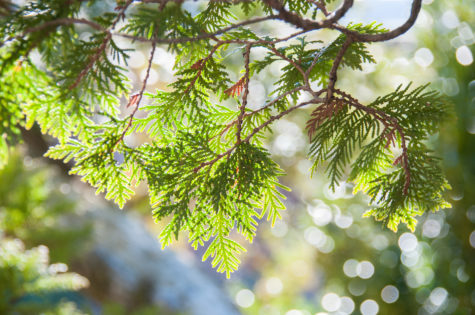
Some Thoughts About Red Cedar
From the Iowa Herbalist here are some interesting thoughts about the Eastern Red Cedar:
I always find it interesting and thought-provoking when the spiritual and emotional effects of plants reflect their physical ones. Just as Cedar seeks to purge our bodies of spiritual impurities, or to protect a home from negative influences, the hard reality is seen at work when Cedar is taken as medicine: whether it is expelling mucus from our lungs as a stimulating expectorant, clearing them of bacterial or viral infection; or opening up our pores in a cleansing fever to clear toxins, as invoked and adopted by sweat ceremonies. Whether you believe in esoteric herbalism, or not, Cedar does one thing: it cleans us, in mind and body.
Now, when I take that mind-transporting whiff of Cedar smoke, I realize why I felt that way. This beautiful tree’s magic is powerful. If you ever need a friend in the midst of illness, or during a hard emotional time, or if you just need to get some bugs out of your system– Cedar is your herb.
If you wish for simpler times, are feeling nostalgic or just want to reminisce, no plant can summon that feeling better; taking you far up into a cabin in the mountains, surrounded by pines and firs, and blankets. Enjoy it in a tea, your favorite elixir, a tasty syrup or perhaps in a calming incense blend. I remember such effects when I’m winding in between the rust-colored Eastern Red Cedars, peppered across Iowa’s tawny grasslands in winter, harvesting their little blue cones. Each time I bring in a jar or two, I spread some of the berries in places where Cedars don’t grow– to make sure there are more trees there for us to enjoy in the future. It’s my way of saying: “Thank you.”
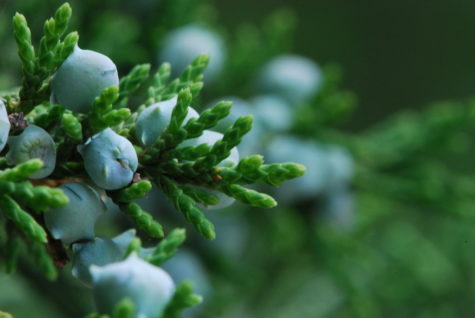
About Juniper
Because Red Cedar is a Juniper plant, the following also holds true.
Juniper, particularly through her wood and berries, is an absolutely wonderful tree with a wide range of uses. In terms of overall meanings in a North American context, we might summarize with the following:
Juniper is about warmth and fire. Juniper helps warm people up and is a strong fire-dominant tree, suggesting many associations with fire: passion, energy, warmth, and the sun.
Juniper offers hope in dark times. Juniper’s berries have long been a staple through the darkest of winters, and I see this both physically and metaphorically. Culturally, we are in a period of darkness, and trees like Juniper can help see us through.
Juniper offers regeneration and bringing things back. Juniper’s ability to grow in places few other trees can demonstrate that this tree is a true land healer, offering us hope in these dark times and sharing the critical message of the healing power of nature. I also think this is tied to its sympathetic magick uses in the American magickal traditions–Juniper helps bring things back.
Sources:
- Encyclopedia of Herbology
- Locusts and Honey
- Magical Aromatherapy by Scott Cunningham
- Iowa Herbalist
- Encyclopedia of Superstitions
- Druid’s Garden
- Ruler: Sun, Solar Deities
- Type: Tree resin
- Magickal Form: Beads, Tears
- Magical properties: Inspiration, Attraction, Invocation, Happiness, Celebration, Contact with astral planes and Exorcism.
- Burn for: Protection, Cleansing, Purification, To promote spirituality, To purify quartz crystals and other stones before use in magic.
Copal is a resin from a tree that is indigenous to Mexico, Guatamala and elsewhere in Central America. It is particularly identified with the aromatic resins used by the cultures of pre-Columbian Mesoamerica as ceremonially burned incense.
Copal is burned on a charcoal tablet, to enhance consecration, spell craft, exorcisms and banishings. It can also be powdered and added to other herbs to focus their energies and lend power. You can also get Copal incense, which is powdered copal in stick form.
Copal is still used by a number of indigenous peoples of Mexico and Central America as an incense and during sweat lodge ceremonies.
About Copal:
Copal is a natural tree resin that is between two states—it is neither a hardened resin nor sap. Copal resin comes from trees in the Buresa family, which is considered a medicinal tree to the Mayas in southern Mexico.
Several species of Central American trees produce resins known as Copal. In Mexico, a species of pitchy pine, Pinus pseudostrobus, is sometimes called Copal, but in Guatemala today (and historically among the ancient Maya) Copal is a resin from plants in the same Burseraceae family as Middle-Eastern Frankincense and Myrrh. These medicinal trees are traditionally used for clearing the body of diseases and also to keep mosquitos away.
Since ancient times, Copal incense has been considered sacred to the people of Mexico, as well as South and Central America. It goes as far back to the Mayan and Aztec cultures. Mass amounts of Copal resin were burned atop the Aztec and Mayan pyramids as offerings to the gods and deities. In the Mayan ruins, Copal was discovered in the burial grounds, proving its spiritual significance.
Copal Varieties and Variations:
Several varieties of Copal are recognized in historic and modern markets in Central and North America, partly based on what plant the resin came from, but also on the harvesting and processing method used.
- Golden Copal resembles Frankincense, being pale-colored, granular, and lightly fragranced.
- Black Copal is dark, heavily-scented and similar to Myrrh.
- White Copal is the more expensive version, also known as Moon Copal.
Wild Copal, also called gum or stone Copal, exudes naturally as a result of invasive insect attacks through the bark of the tree, as greyish drops which serve to plug the holes. Harvesters use a curved knife to cut or scrape the fresh drops off the bark, which are combined into a soft round glob. Other layers of gum are added on until the desired shape and size is achieved. The external layer is then smoothed or polished and subjected to heat to enhance the adhesive properties and consolidate the mass.
The favored type of Copal is white Copal (Copal blanco or “the saint”, “penca” or agave leaf Copal), and it is obtained by making diagonal cuts through the bark into the trunk or branches of a tree. The milky sap flows along the channel of the cuts down the tree to a container (an agave or aloe leaf or a gourd) placed at the foot. The sap hardens in the shape of its container and brought to market without further processing.
According to Hispanic records, this form of the resin was used as an Aztec tribute, and pochteca traders transported from the outlying subject provinces to Tenochtitlan. Every 80 days, so it was said, 8,000 packages of wild Copal wrapped in maize leaves and 400 baskets of white Copal in bars were brought into Tenochtitlan as part of a tribute payment.
Copal oro (gold Copal) is resin which is obtained by the complete removal of the bark of a tree; and Copal negro (black Copal) is said to be obtained from beating the bark.
Black Copal is favored by rural people for their worship services and is usually sold in the form of substantial disks or balls which are burned on a bed of charcoal.
Copal often has inclusions and is sometimes sold as “young amber.” Sometimes insects will become trapped within the resin, just as they sometimes are found in amber. Copal is easily distinguished from genuine amber by its lighter citrine color, and its surface will become tacky with the application of a drop of acetone.
Magickal Uses:
Copal is popular in magical, healing and spiritual uses. It makes a great meditation incense and increases psychic insight. Inhaling its aroma is said to enhance the powers of clairvoyance. It is also used to provide systematic oracles.
- Divination spells that use Copal can be found here: Divination
Copal is added to many love, exorcism and purification incenses. It’s an important ingredient in many rituals. A piece of Copal can represent the heart in poppets. Many churches use this incense before their ceremonies.
Copal, is a “holy incense,” and can be can used for consecration and anointing of pentacles, athames, wands, etc. by passing these objects through its smoke. It can be burned when one is seeking “divine favors”. Like most resins, Copal is burned or smoldered as an incense during spellwork and/or rituals and needs to be burned on charcoal tablets or discs.
Copal makes for an excellent smudge and is commonly used in sweat lodge ceremonial gatherings. This is a wonderful resin to work with and for creating a mellow, magickal atmosphere to work in.
- A recipe for a Copal Ritual Wash can be found here: Magickal Apothecary
Burn this incense for purification and to contact the spirits of the dead. Mexican churches burn Copal on the Day of the Dead to help the souls of the deceased reconnect with their loved ones on the earth plane.
In its native Guatemala, Copal is a holy incense burned when seeking divine favor. Saint statues and other sacred items are blessed by smoking them in Copal. Passing seed corn through the smoke from Copal that was dressed in sacrificial blood before being burned is said to increase its viability and productivity.
Copal is used by the Maya to induce trances and in rites of divination, such as one where fourteen grains of corn are passed through the smoke, then cast on the ground, and the patterns they make are read to foretell the future.
In the US, Christians recite the 23rd Psalm while burning Copal or speak aloud their gratitude for blessings received.
Copal may also be used to draw attention from the opposite sex.
- Carry a piece of Copal in your pocket or in a charm bag especially when the opportunity to meet someone arises.
- Make a “path of seduction” by sprinkling Copal powder to create an aura of romance.
Grind a lump of Copal into powder using a mortar and pestle, visualizing your desires coming true while you’re grinding. Then either burn the powder, or carry the powder with you inside a locket worn around your neck.
It can be used to ward off negative energy by placing small pieces of Copal in with your crystals and then kept in a special place of your choice or wearing around your neck as a magickal sachet. A “sachet of protection” can be made with a combination of Copal, Frankincense, and Myrrh.
It is said that the familiar scent of White Copal helps the souls find their way back during their annual visit home, which is why this resin often burned during spirit workings and Beltane and Samhain rituals. For purification, spirit and ancestral workings, White Copal also is used to induce concentration and mental clarity. A beautiful resin to bring about peace and happiness.
Copal incense is a wonderful energy tool to use during your meditations. It is linked with the crown chakra, deepening your awareness and encouraging pure thoughts during meditation. Copal also helps to strengthen the auric body, removing all energy blockages. It is particularly useful in times of stress or even for alleviating feelings of depression, because it helps you to shift your mindset.
The burning of Copal is believed to call upon the God Tlaloc and the goddess Chalchiuhtlicue. Both of these dieties were associated with fertility and creation. You can light Copal incense as an offering to this God and Goddess, if you feel connected to their energy. Lighting the incense in their honor will invite them into your space and allow you to tap into the power of creation.
The Metaphysical Properties of Copal:
“Real” amber is millions of years old; but there is also another form of amber, young amber. Copal is a very young form of amber. Real amber is wonderful, but it does have that huge age behind it, experience and wisdom which makes it a little difficult to deal with for beginners, and a lot more expensive on your pocket.
Copal, on the other hand, is YOUNG, and that is the operative word and importance of using Copal in magic charms and potions.
It is still far more alive in many ways, far closer to our own states of being as it is on its road into the many millions of years that are its future. Copal offers a bridge between us now, and the infinity of time where our souls reside.
The young Copal is friendlier, lighter and brighter; and together with the absolute healing/protection of all resin and amber, this YOUTH is what reacts with the energy system of a human being and brings re-charging as well as that expectation of eternal life at the same time.
Copal unites the energizing force of the sun with the grounding, transmutive properties of earth. A powerful yet gentle healer and cleanser, Copal draws out and transmutes negative energy of all kinds on all levels. Copal aids in physical self-healing, emotional healing of depression, and environmental clearing.
Created out of tree blood, its very life force, the material trees use to heal themselves, Copal is a healing treasure. It heals physically, emotionally, and environmentally, clearing and cleansing all negativity and illness that exists around it. It is a powerful yet gentle healer, drawing out negative energy and bringing positivity. This gem dispels disease, revitalizing tissue and encouraging physical regeneration.
Copal opens and cleanses all of the chakras. Highly protective, Copal also aids in the manifestation of ideas to reality. The life force trapped within Copal promotes fertility, and its protective and environmental clearing properties make it a good stone to use to prepare a healing or birthing room.
Copal strengthens the Meridians, and helps to keep us grounded so that we can speak from the heart. It also strengthens our control over our minds. Use Copal with the Solar Plexus Chakra to increase confidence, mental clarity, and creative self expression. A chunk of Copal is perfect for your pocket or for selected energy work.
With the life force of eras long past, Copal links the everyday self to the higher spiritual reality. It aids in manifestation, its electromagnetic properties attracting what it is you focus on. Use pieces of Copal in your manifestation grids or rituals.
Copal for Purification:
Copal incense is completely natural incense that is used to purify the energy of spaces, places and objects. It has a clean, light, woody scent that could be compared to pine or turpentine. One of the best Copal uses is burning it to clear away all the negative energy and make positive changes. It brings a very positive and loving energy that will fill your home with peaceful energies.
Try one of these cleansing methods:
- To cleanse your healing crystal jewelry
Hold the piece and allow it to fully submerge in the smoke. You may notice the jewelry moving in a circle or back and forth. Keep it in the smoke until all movement stops.
- For cleaning crystals:
If you’re using Copal incense for cleaning crystals, hold the crystal in the smoke for a few seconds, rotating it so the smoke bathes all sides of the crystal.
- For clearing spaces:
To cleanse a space, allow the Copal incense to fill the room. If you have a feather fan, encourage the smoke to rise into the corners of the room.
Sources:
A ghost apple is a very rare phenomenon that happens when freezing rain coats old and rotting apples and creates a solid icy shell around them. Because apples have a lower freezing point than water, the apples that are inside the thick icy shell melt before their icy shell. When gently shaken, these mushy apples slip out of their icy shell and leave the “ghost.”
For this to happen, it requires extreme changes in temperature, freezing rain, an abrupt warm up. All of which have to happen in just the right amounts and for the optimum amounts of time.
Because they are so rare, and so interesting, it follows that a Ghost Apple would make for a very effective magickal ingredient. If you happen to be lucky enough to find a ghost apple, or if you are able to figure out how to make one, here are some ideas for ways to use them in magick.
- Because apples are representative of love, a rotten apple represents a toxic relationship, or individual.
- The icy shell around the apple speaks of the walls you build to protect yourself.
Sometimes, that icy shell might represent an attempt to protect and shield a relationship that is unhealthy and unhappy. The icy shell might also represent walls that you have created around inner hurts and trauma. Walls that keep the world out, and may indicate a feeling of being frozen.
- The empty shell of ice shows that the relationship is ended, the toxic person is gone, but the trauma remains.
Often when a difficult or toxic relationship is ended, it leaves you with an inability to open up, or allow yourself to feel vulnerable again.
A spell for using a Ghost Apple to open your heart to love again can be found in the Book of Shadows. If you would like to try your hand at making your own Ghost Apples, I would suggest the following method:
You will need the following:
- An apple
- A plastic container that is larger than your apple
- Water
To speed up the process, bake the apple until it is soft. Allow the apple to cool to room temperature. Fill the container about halfway with water, and then place the cooled apple into the container upside down. The bottom of the apple should be just slightly above the level of the water.
Now, freeze your container.
When the water is frozen solid, remove it from the container and suspend it, upside down until the apple is thawed enough to slip out of the icy casing. You now have a home made version of a Ghost Apple.
For best results, put the power of intention into the process. Visualize the apple as the person or relationship slowly going bad while it is baking. The water in the container represents what it is that feels frozen. As the apple slips out of the ice, see it as the toxic person or situation slipping away.
You are now ready to do some magick to release yourself from the icy residue, which can be as simple as allowing it to melt away.
- Ruler: Moon, Buddha
- Type: Extract from tree
- Magickal Form: Oil, whole chunks
Note: Camphor is the resin of an Asiatic tree. It is a natural moth repellent and should not be confused with toxic naphthalene moth balls, which are merely scented with Camphor. When it comes to the essential oils, only essential oil of white camphor is safe for use.
Camphor is a substance frequently taken for granted. It’s used in many lotions and cosmetics because of the cooling sensation it provides. Camphor, botanically related to cinnamon, is considered a sacred lunar plant. In Marco Polo’s time it was bartered for with gold. It is one of the seven substances most sacred to Buddha and meditation upon it, or in its presence, will bring enlightenment.
Obtained from the evergreen tree, this fragrant white compound holds many spiritual properties. In voodoo rituals, it is burned for love and attraction. It is one of the most sacred substances to offer to the moon goddess on a new moon to thank her for her abundant blessings.
Camphor is also used in cleansing and purification rituals. White camphor oil added to the bath also clears the thoughts and soothes the soul.
Camphor allegedly reduces sexual desire. Use it to get rid of unwanted passions or unwanted admirers. Burn camphor or add one or two drops of essential oil of white camphor (other forms are toxic) to your bath when you need to cool off. Endeavor a would-be lover to smell camphor if he or she is forcing their attentions on you and you are not interested. It will instantly turn him or her off.
Burned on charcoal, Camphor is said to cleanse the home. It may be blended with other incenses for this purpose. The scent of burning camphor purifies a space and brings self-discipline, aiding in controlling and transforming bad habits. Long used in the Eastern Hemisphere for temple purification and protection, camphor is excellent for deep meditation and gaining insight. A little goes a long way, so if you burn camphor on charcoal, use only a small pinch.
Camphor resin is sold in small squares, four to a pack. Those who do not wish to burn incense place one square in each corner of a room, or crumble a single square into a bottle, cover it with Florida Water, and leave the bottle open to spiritually cleanse the room.
During the days of the polio epidemics, mothers hung camphor balls around children’s necks to ward away illness. This spell works under the same premises, except that what you’re warding off is the metaphysical virus of an unwanted romantic attention, or to ward off illness, negativity, or whatever you would like to repel.
Here’s how:
Dip a cotton ball in essential oil of white camphor and keep it in your pocket or tucked into a bra. Alternatively, you could hang it around your neck.
NOTE: Be sure not to use any other variety of camphor. Only essential oil of white camphor is safe for use.
Camphor is under the dominion of the moon. The lunar palace of Lady Chang’O is allegedly crafted from cinnamon wood, however both true cinnamon and camphor derive from trees of the Cinnamonium family. Maybe the Moon Lady’s palace was actually built from camphor wood.
Because of this connection, camphor can transmit some of the moon’s protective and luck drawing powers. Here’s how:
Charge spring water with lunar energies by filling a white, blue, or silver container with clear spring water and then leaving it in a windowsill or outdoors on a full moon night. The next day, dissolve a camphor square into the lunar-charged spring water.
Use this water to cleanse appropriate magical tools so that they may be used to fulfill your wishes and be imbued with the power of the moon.
NOTE: Be careful, camphor can also be toxic.
From:
- Element Encyclopedia of 5000 Spells
- The Encyclopedia of Magickal Ingredients
- The Herbal Alchemist’s Handbook
- Planetary Association: Mars
- Gender: Masculine
- Element: Fire
- Deity: Isis
- Basic Powers: Protection, Purification, Exorcism, Healing.
The ancient Egyptians worshiped onions as gods and always planted them in their gardens. Whether your gods are in your garden or the veggie bin of your kitchen, they have many magical uses. Use this many-layered food to peel away problems in life and to dispel anger. The onion is also a love food and is said to increase male virility.
- Red onions promote lust when added to dishes.
- White onions clear away obstacles when peeled to the core.
- Use purple onions for power and seduction.
- Yellow onions dispel anger between friends.
Carve the names of quarreling parties into a yellow onion and keep until it forms roots. At this time, the two friends or family members will begin to recall the positive roots of their relationship and let go of their anger toward each other. Do not get rid of the onion until apologies have been made and accepted. You may then offer the onion to the earth in thanks.
Cut an onion in half and put it under your sink to absorb any negativity in your home or nastiness sent your way and replace every week or two — you’ll be surprised how much it absorbs and how quickly it shrivels. Prick a whole fresh onion with black headed pins and place on a window sill to protect from the evil eye and magical attack. Or, simply braid together onions from your garden and hang them in your kitchen or over your pantry door to protect your home.
Folk healers use onions just like garlic cloves – cut them in half and rub on the afflicted area and then discard. The onion becomes as a scapegoat for the illness. Also, like garlic, onion skins are never thrown out, but burned to attract and keep money. The skins can also be burned for protection and banishing and, when finely ground, can be added to incense blends.
In Hungary, onion skins are burned during childbirth to protect the mother and baby who are believed to be most susceptible to the evil eye and evil spirits at this time. In European folk magic, knives and swords are consecrated by running the blades over the juices of a freshly halved onion – why not use an onion to bless and cleanse your ritual knives before and after use?
Onions are used in the practice of hoodoo/rootwork/conjure and other forms of folk magic in a variety of ways.
- Red Onions
Red onions are powerful, but some folks say that you have to steal one from a grocery store to get the best use of it.
When cutting red onions, take the skin and turn on the stove top. Burn the onion skins in the flames. Folks burn red onion peelings because they are lucky for the home; because they draw in business to a bar, restaurant, or boarding house; because they keep the law away; and because they help in love affairs.
For the last-named purpose, you can call your lover’s name and say, “Hold him tight to me; make him come under my command,” three times as the red onion peels burn.
Red onion skins can also be used without burning them. They can be added to incense, oils, powders, and even mojo bags.
For peace in the home, bore a hole in a red onion, fill it with sugar, tie a shoe lace around it, and hide it above the door where folks will walk under it.
- Yellow & White Onions
An old folk remedy for curing baldness is to rub a cut onion on the head. Yellow and white onions are also used to repel and banish a person.
More Onion Magick
If you want to see your future marriage partner in your dreams, all you need do is place an onion under your pillow. If you are trying to determine between two marriage prospects, you should write their names on two onions, place them on a windowsill, and see which one sprouts first.
Onions are very protective. A half onion is kept in the kitchen to absorb diseases and ill-luck. It should be replaced every few days. The onion’s pungent odor is believed to ward off evil spirits. It also provides general protection.
Rub a cut onion on the door frame and on the ground or floor in a line while stating your desire that whatever it is you are trying to repel cannot enter.
If there is someone in your house and you want them gone for good, take an onion, a name-paper for the person and/or a personal effect from the person. Use a knife to make a slit in the onion. Stuff the name-paper and/or personal effect into the onion. Roll the onion out the house and into the street. If the person is known to sit in a specific chair in the house the you can put it there and then slap it to the floor and kick it out the door and into the street. Cussing the person while you do it will make the work stronger.
Another method of banishing someone is to take a cut onion and rub it on the bottom of their shoes, from the heel going to the toes, while telling them to get the hell out of your house.
If your husband is too demanding for sex, take a cut onion and make one pass down your coochie. He will leave you alone that night.
Onions can be used to break up couples. A hollow is made in a large onion and name-papers or personal effects from the couple are placed into the onion, along with items such as black cat hair, black dog hair, and/or red pepper. The onion is then rolled under the home (if the home is up off of the ground), hidden under the porch, or buried near the front of the house where the couple will walk over it. As the onion rots the couple will begin to fight and will separate.
Carrying an onion around with you is said to be good for your health, and ensures that you do not catch a cold. During the plague, onions were frequently hung up in rooms to help preserve good health. Even today, some people will place an onion in the room of someone who is sick, believing that it will help drive the illness away.
Onion Weather Forcasting:
Onion’s skin very thin,
Mild winter coming in.
Onion’s skin thick and tough,
Coming winter cold and rough.
Onion Tips and Tricks:
Keeping a piece of raw potato in your mouth wile cutting onions will stop your eyes from weeping. Holding a matchstick between your teeth also works.
Sources
This information was collected from a variety of sources including the following:
